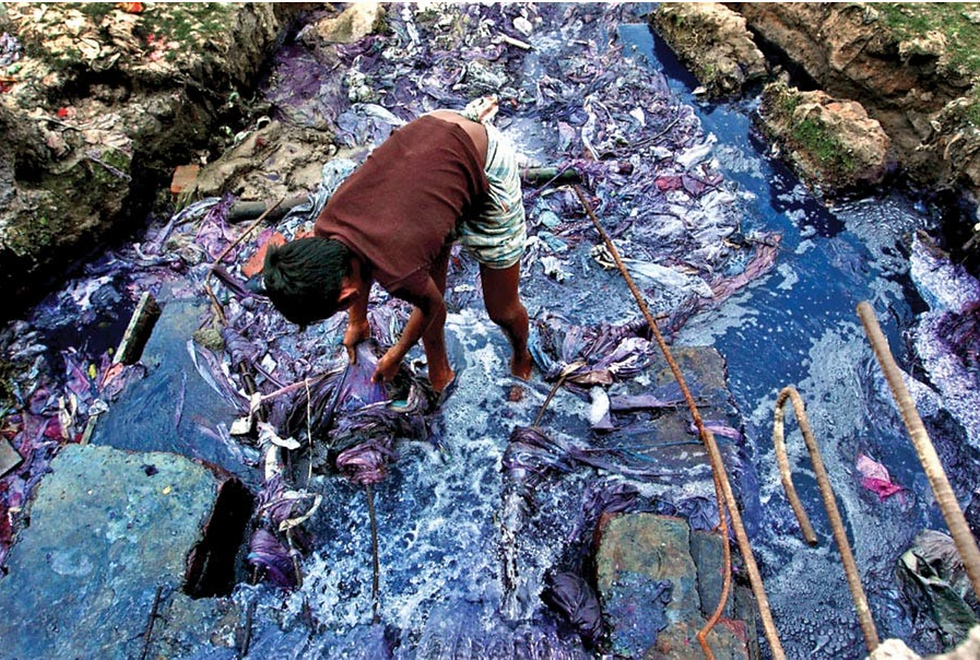Fashion Sustainability
- Anastasia Mouskou

- Dec 11, 2020
- 2 min read
Updated: Dec 12, 2020

How does fashion affect the environment? Why do brands and organisations invest so much in sustainability?
It takes about 7,600 litres of water to produce one pair of jeans. It takes around 2,700 litres of water to produce one t-shirt. And it roughly takes about 10,000 litres of water to cultivate just 1kg of raw cotton. The fashion industry is the second larger polluter in the world.
What is sustainable fashion?
Sustainable fashion is a movement and process of fostering change to fashion products and the fashion system towards greater ecological integrity. it is defined as clothing, shoes and accessories that are manufactured, marketed and used in the most sustainable manner as possible.
Fashion’s Impact on the Planet
1. Water Pollution
In most countries in which garments are produced, untreated toxic waste waters from textile factories are dumped directly into the rivers. Wastewater contains toxic substances such as lead, mercury and arsenic. These are extremely harming to the aquatic life and health of millions of people.

2. Water Consumption
Huge quantities of freshwater are used for the dyeing and finishing process for all clothes. it can take up to 200 tons of freshwater per ton of dyed fabric. Also, cotton needs a lot of water to grow. This has dramatic ecological consequences such as the desertification of the Aral Sea that has entirely drained from cotton production (see photo below). imagine that an estimation of 790 million of people don’t even have access to clean water.

3. Microfibers in Oceans
Every time we wash a synthetic garment (i.e. polyester) about 1,900 microfibers are released into our oceans. Scientists have discovered that small aquatic organisms ingest these microfibers and plastic is eventually introduced in our food chain.

4. Chemicals
Chemicals are used during fabric production, dyeing and bleaching, and wetting process of each garment. This does not only cause diseases, but also soil degeneration.

5. Greenhouse Gas Emissions
The fashion industry accounts for 10% of global carbon emissions due to energy used during its production, manufacturing, and transportation of billions of garments purchased every year. Synthetic fibers (fibers that are obtained from artificial or man-made sources such as polyester and nylon) are also made from fossil fuels, making the production much more energy-intensive than with natural fibers. Most of our clothes are also produced in China, India, and Bangladesh – countries essentially powered by coal. This is the dirtiest energy in terms of carbon emissions.

We Can Do Better…
Buy Less Use More Buy Vintage Buy Second Hand Avoid Fast Fashion Be More Conscious Reuse Choose Natural Dyes Give Your Unwanted Clothes to someone who needs them Support Ethical Brands Collaborate Choose Natural Fibers Buy Better Quality Buy Clothes made in countries powered by more reusable energy Choose Recycled Fibers Choose brands produced in countries with stricter environmental regulations
Read
More on www.sustainyourstyle.org


Commenti